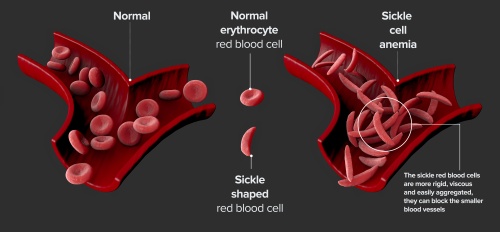Teachers Play a Crucial Role in Supporting Students with Sickle Cell Disease
By: , July 18, 2024The Full Story
Educators are being urged to be aware of the impact they can have on students living with Sickle Cell Disease (SCD) and to take their role in ensuring their academic success and well-being seriously.
SCD is a genetic blood disorder affecting millions worldwide, with symptoms often manifesting in early childhood, significantly impacting a child’s learning and overall health.
Co-chair of the National Sickle Cell Technical Working Group (SCTWG), Professor Jennifer Knight-Madden, tells JIS News that teachers play a critical role in the lives of children with SCD.
“It’s crucial for teachers to understand that SCD can affect learning as early as two years of age,” she says, noting that these children may already be facing challenges when they enter primary school.
The SCTWG Co-chair who is also the former Director of the Sickle Cell Unit at the Caribbean Institute for Health Research (CAIHR), says simple accommodations such as allowing students to elevate their legs or ensuring that they have access to water and bathroom breaks can make a big difference.
“Children with SCD sometimes get leg ulcers, which can take months if not years to go away. Rather than to tell them to come back [to school] when the ulcer is better, let them [stay in] school, elevate their legs and heal while they learn,” Professor Knight-Madden recommends, adding that they should also help them to make up their lessons when they have missed a lot of school.
“Children with Sickle Cell Disease also need to keep drinking a lot of water because if they get dehydrated, they might get pain crisis, so let them drink the water in class and let them go to the bathroom when they need to,” she advises.
Pain crisis, which is a major symptom of sickle cell disease, occurs when sickle- shaped red blood cells block blood flow through tiny blood vessels to the chest, abdomen and joints.
The pain varies in intensity and can last for a few hours to a few days.

Professor Knight-Madden notes that physical activities such as rigorous exercise that might trigger pain crises should be approached with sensitivity and understanding from teachers, who can help mitigate stigma and support emotional well-being in the classroom.
The stigma, she points out, could come because children with SCD generally have certain physical attributes.
“They may have yellow eyes and they may be very slim. Other students in the class may tease them, so the stigma can be right there in the classroom,” she says.
Professor Knight-Madden also stresses the importance of fostering an inclusive classroom environment.
“Teachers can educate classmates to be empathetic and compassionate towards students with SCD, helping to prevent bullying and promote understanding,” she adds.
Professor Knight-Madden notes that another complication in children with SCD is that they get strokes.
Up to 12 per cent of children with SCD get strokes, 25 per cent of which are silent strokes, affecting cognitive functions without obvious physical symptoms.
“In a silent stroke, there is no weakness and the child’s speech is normal; however their learning is negatively affected,” Professor Knight-Madden points out.
“If a child with SCD begins to struggle academically after previously performing well, it’s crucial to consider psychoeducational testing, so that they can get additional help,” she notes.
The SCTWG Co-chair says that early intervention can provide the necessary support and resources that the students with SCD need to thrive.
She says that by being informed, supportive and proactive, educators can empower these students to achieve their full potential.
“Together, we can ensure that every child, regardless of health challenges, receives the education and support they deserve,” she adds.
The Jamaica Sickle Cell Cohort Study, conducted by the Sickle Cell Unit between 1973 and 1981, found that 15 per cent of Jamaican adults are at risk of having a child with SCD and that one in every 150 Jamaicans is born with SCD.
National Sickle Cell Programme Coordinator in the Ministry of Health and Wellness, Dr. Carol Lord, tells JIS News that in 2023, the Ministry achieved 99.9 per cent coverage in screening newborns across both public and private healthcare institutions, demonstrating the success of early detection and intervention initiatives.
“Early detection allows for timely interventions that significantly reduce the risk of complications and improve the quality of life for affected individuals,” Dr. Lord says.
The Programme Coordinator further points out that patients who have been identified as positive for sickle cell disease receive specialised care organaised by parish coordinators and the Sickle Cell Unit.
“The Ministry’s approach includes a life-course strategy, ensuring that all pregnant women and their newborns are screened, while the general population undergoes testing as clinically indicated,” she notes.
Dr. Lord says that the first five years of life present the highest risk for sickle cell-related complications.
“Through screening, vaccination and early interventions, many deaths can be prevented. The Ministry remains steadfast in its efforts to provide comprehensive care and support,” she says.

